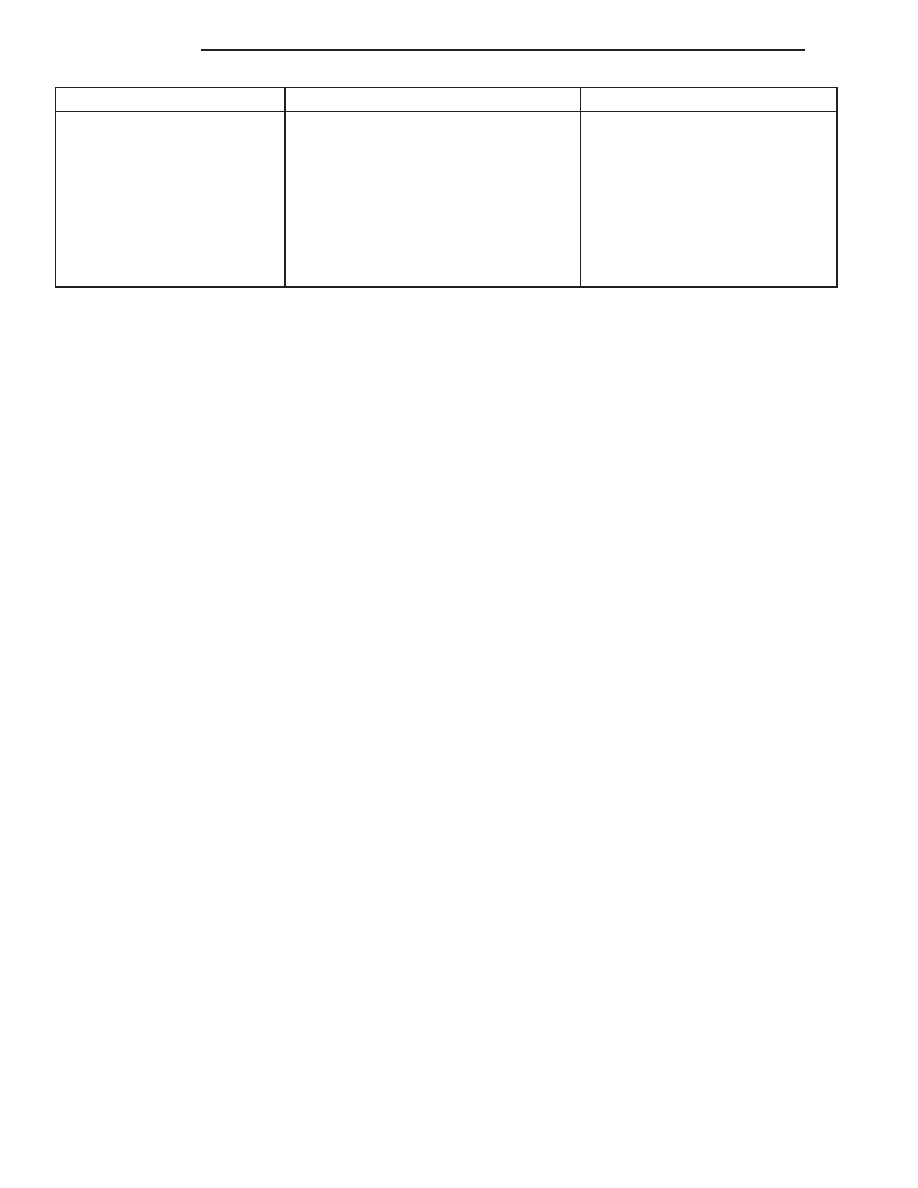Content .. 1383 1384 1385 1386 ..
Jeep Liberty KJ. Manual - part 1385

CONDITION
POSSIBLE CAUSES
CORRECTION
COOLANT LEVEL
CHANGES IN COOLANT
TANK. TEMPERATURE
GAUGE IS IN NORMAL
RANGE
1. Level changes are to be expected
as coolant volume fluctuates with
engine temperature. If the level in
the tank was between the HOT and
COLD marks at normal engine
operating temperature, the level
should return to within that range
after operation at elevated
temperatures.
1. This a normal condition. No
repair necessary.
COOLING SYSTEM FLOW CHECK - DIESEL ENGINE
To determine whether coolant is flowing through the cooling system, use the following procedures:
1. If engine is cold, idle engine until normal operating temperature is reached. Then feel the upper radiator hose. If
it is hot, coolant is circulating.
WARNING: DO NOT REMOVE THE COOLING SYSTEM PRESSURE CAP WITH THE SYSTEM HOT AND
UNDER PRESSURE BECAUSE SERIOUS BURNS FROM COOLANT CAN OCCUR.
2. Remove pressure/vent cap when engine is cold, idle engine until thermostat opens, you should observe coolant
flow while looking down in the coolant recovery pressure container. Once flow is detected install the pressure/
vent cap.
COOLING SYSTEM AERATION
Low coolant level in a cross flow radiator will equalize in both tanks with engine off. With engine running and at
operating temperature, the high pressure inlet tank runs full and the low pressure outlet tank drops, resulting in
cooling system aeration. Aeration will draw air into the water pump resulting in the following:
•
High reading shown on the temperature gauge.
•
Loss of coolant flow through the heater core.
•
Corrosion in the cooling system.
•
Water pump seal may run dry, increasing the risk of premature seal failure.
•
Combustion gas leaks into the coolant can also cause aeration.
7 - 18
COOLING
KJ